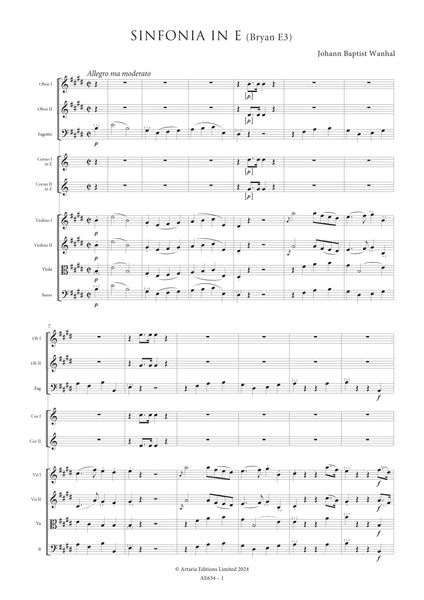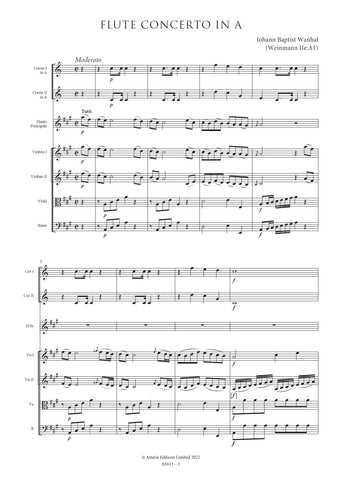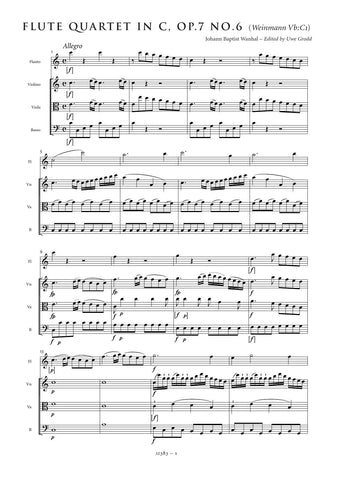Wanhal, Johann Baptist: Sinfonia in E major (Bryan E3) (AE634) – sheet music
Previous Product Next Product
Description |
Wanhal, Johann Baptist (1739-1813)
|
||||||||||||||||||
Details |
The present symphony dates from ca 1772–1773, and although comparatively few copies of the work survive — two in Prague and single copies in Kremsmünster, Regensburg and Venice—its listing in Supplement XII (1778) of the Breitkopf catalogue and inclusion in a number of other contemporary thematic catalogues suggest that it probably circulated reasonably widely during the eighteenth century. Bryan notes that Bailleux used the first movement of the work, transcribed into C, as the finale to his printed edition of C7b which formed part of his Op.25. This version was in turn pirated by B. Hummel as Op.9. As is the case in all of Wanhal’s mature symphonies, E3 demonstrates his mastery of formal processes as well as considerable ingenuity in his manipulation of motivic material. Like Symphony Eb (AE633), E3 is cast in three movements, omitting the Minuet and Trio, and the central movement consists of alternating sections that are differentiated by tempo, metre and thematic material. The structure, however, introduces a new element. The final section of the movement, in 3/8 and cast in the tonic, concludes on V7/V of E marked with a fermata; the dissonance is resolved by cadencing into the finale thus creating an elision between the second movement and the finale. Unlike Eb, Wanhal retains horns (now crooked in A) in this middle movement, assigns solo roles to oboe 1 and the bassoon and employs two viola parts to shadow the violins. The linking of the second and third movements of E3 reminds us of Wanhal’s highly idiosyncratic Symphony A9 (AE101) which has elisions between the first and second and second and third movements, thus creating the impression of a single large-scale multi-partite work which is further reinforced by its conclusion with the opening bars of the work played piano. |
||||||||||||||||||
Score Preview |














